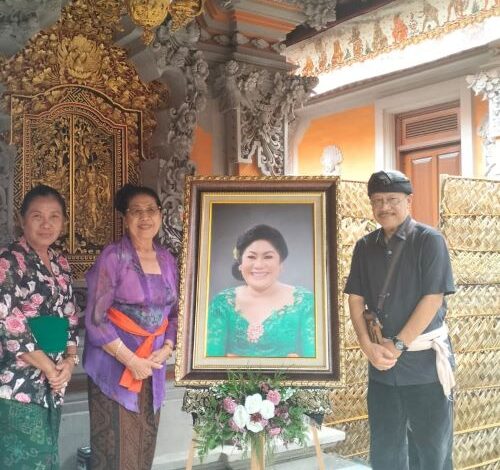
By Ali Syarief
It was an honor to be invited to pay my respects at the passing of Cokorda Istri Nitiyadnya, the second daughter of the King of Ubud. To stand in the midst of the royal family’s mourning was not merely an opportunity to offer condolences, but also an invitation to reflect more deeply on the meaning of death within the Hindu worldview. In the grandeur and profound symbolism of the ceremony, I learned that death is not an end, but a journey of the soul returning to its source.

For many cultures, death is a mystery often approached with fear, silence, or avoidance. Yet Hinduism offers a radically different perspective: death is not a finality but a threshold, a gateway to a wider spiritual journey. The body we inhabit is seen only as a temporary garment, while the soul—atma—remains eternal. Much like a flame that moves from one lamp to another, the atma departs from one body, seeking another vessel in the cycle of samsara, until it ultimately attains moksha—liberation from birth and death.
As the Bhagavad Gita teaches:
“Just as a person puts on new garments, giving up old ones, so the soul accepts new bodies, giving up the old and useless ones.” (Bhagavad Gita II:22)
From this perspective, death becomes not simply a loss but a moment of return. What is born of earth shall return to earth, what is born of water shall return to water, what is born of fire shall return to fire. The human body, shaped by the panca maha bhuta—earth, water, fire, air, and ether—dissolves back into its origins, while the soul, a spark of Brahman itself, continues its journey to subtler realms.
The Ngaben ceremony embodies this philosophy. In the flames of the funeral pyre, it is not merely the body that dissolves, but also attachments, sorrows, and the deep grip of possession that bind us to the material world. The grieving family, even in their profound loss, find consolation in ritual. They learn to let go through prayer, not only through tears. They accompany the soul of their loved one toward freedom, rather than binding it with longing.
Ngaben teaches that fire is not only a destroyer but a purifier. In its blaze, the mortal body is returned to its natural elements, while the soul, guided by mantras and sacred offerings (yadnya), finds its way home. When the ashes are finally released into the river or the sea, it serves as a timeless reminder: human life is not about clinging, but about releasing; not about holding on, but about surrendering.
Across cultures, rituals surrounding death often reflect the same universal truth—that to love is eventually to let go. In the Christian tradition, ashes are marked as “dust to dust.” In Japanese Buddhism, incense rises as a bridge between the living and the departed. In Hindu Ngaben, the rising flame becomes a prayer that carries the soul beyond. Though the expressions differ, the wisdom converges: death is not a terror to resist, but a teacher reminding us that everything we cherish is impermanent.
Thus, in Hindu thought, death is not an enemy to be feared, but a profound guide toward awareness. It calls us to live more consciously, lightly, and sincerely. Like a river that flows without ever returning to its source, the journey of the soul continues onward, seeking its union with the eternal.
Ngaben, then, is not merely a ritual of farewell—it is a living prayer in flames. It is the family’s final gift of love, no longer in the form of embrace, but in the grace of release. And within the burning fire of loss, one finds peace: the realization that nothing is ever truly lost. It has only returned.



